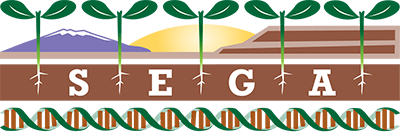You are here
Tree hybridization and genotypic variation drive cryptic speciation of a specialist mite herbivore.
Publication Type:
Journal ArticleSource:
Evolution; international journal of organic evolution, Volume 62, Issue 12, p.3027 - 40 (2008)ISBN:
0014-3820URL:
http://www.ncbi.nlm.nih.gov/sites/entrez?Db=pubmed&DbFrom=pubmed&Cmd=Link&LinkName=pubmed_pubmed&LinkReadableName=Related%20Articles&IdsFromResult=18752612&ordinalpos=3&itool=EntrezSystem2.PEntrez.Pubmed.Pubmed_ResultsPanel.Pubmed_RVDocSumhttp://www.ncbi.Keywords:
Analysis of Variance, Animals, Base Sequence, Cluster Analysis, Crosses, Genetic, DNA Primers, Genetic Variation, Genetics, Population, Geography, Host-Parasite Interactions, Hybridization, Genetic, Mites, Molecular Sequence Data, Phylogeny, Populus, Sequence Analysis, DNA, UtahAbstract:
<p>Few studies have investigated the roles that plant hybridization and individual plant genotype play in promoting population divergence within arthropod species. Using nrDNA sequence information and reciprocal transfer experiments, we examined how tree cross type (i.e., pure Populus angustifolia and P. angustifolia x P. fremontii F(1) type hybrids) and individual tree genotype influence host race formation in the bud-galling mite Aceria parapopuli. Three main findings emerged: (1) Strong genetic differentiation of mite populations found on pure P. angustifolia and F(1) type hybrids indicates that these mites represent morphologically cryptic species. (2) Within the F(1) type hybrids, population genetic analyses indicate migration among individual trees; however, (3) transfer experiments show that the mites found on heavily infested F(1) type trees perform best on their natal host genotype, suggesting that genetic interactions between mites and their host trees drive population structure, local adaptation, and host race formation. These findings argue that hybridization and genotypic differences in foundation tree species may drive herbivore population structure, and have evolutionary consequences for dependent arthropod species.</p>
- Log in to post comments
- Google Scholar
- RTF
- EndNote XML
- RIS
Theme by Danetsoft and Danang Probo Sayekti inspired by Maksimer
